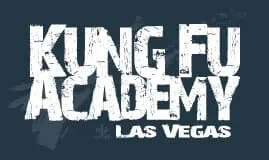Wing Chun is an art that is often considered to be old or classical. However, it is anything but classical. In fact, Wing Chun can be seen as a concept-based process of efficiency and simplification. It is a guide that takes you through a never-ending pursuit of an ideal, a process of learning how to move your body scientifically while adhering to universal guiding principles.
Wing Chun
Letting Go of Preconceived Notions
One must release oneself from fixed ideas and preconceived notions to truly comprehend Wing Chun. It must be regarded as a process of learning, not a style with established techniques. Wing Chun's principles are based on Taoist philosophy, enabling it to be extremely adaptable and pliable. Training in Wing Chun necessitates a more esoteric philosophical approach, and the concept of Wing Chun is elusive and undefined.
Despite having a distinct set of principles and concepts underlying its movements, Wing Chun, an art that has been present for centuries, does not have a predetermined form or appearance. To correctly comprehend the art, practitioners must abandon their preconceptions of what it should resemble.
Restricting Wing Chun also limits its potential and its ability to be expressed. Taoist philosophy emphasizes flexibility, adaptability, and awareness of the moment, which is reflected in Wing Chun's movements, which can be conveyed in countless different ways.
Wing Chun's elusive nature reveals itself in various ways, reflecting the fluid and adaptable nature of the art. It cannot be easily categorized or described, and it does not adhere to a fixed set of techniques or movements. Wing Chun allows practitioners to express themselves in individual and unique ways.
As a result, each practitioner's Wing Chun may differ, and this should be encouraged. By embracing Wing Chun's elusive nature and relinquishing preconceived notions about what the art should resemble, one can unlock its full potential and express oneself in genuinely creative and unique ways.
Wing Chun's beauty is rooted in its flexibility and adaptability, allowing practitioners to find their individual paths and styles. By discarding preconceived notions about what Wing Chun should resemble, one can fully embrace its elusive nature and discover the true beauty of this ageless martial art.
Wing Chun
No "Blocks" in Wing Chun
One of the key differences between Wing Chun and other martial arts is that there are no "blocks" in Wing Chun. Defensive movements usually aren't seen, and the best defense is offense. Wing Chun's strikes flow through subtle defensive positions on their way to an attack. Movements move forward intercepting an opponent's energy and then deflect it while on the way to a strike.
Wing Chun
A General Strategy
Despite the elusive nature of Wing Chun, it does have a general strategy. Wing Chun practitioners are generally pressure fighters, moving forward at every chance, sticking to an opponent, seeking the opponent's center while simultaneously attacking and defending. The strategy holds to the belief that if your opponent is too busy defending, they won't have time to attack.
Wing Chun
Conclusion: Unlocking Wing Chun's Full Potential
In conclusion, to truly appreciate all that Wing Chun is, we must free ourselves from the fixed ideas placed upon it. We must think of Wing Chun as a process of learning and a guide to a never-ending pursuit of an ideal. By letting go of our preconceived notions and limiting beliefs, we can see Wing Chun in a new light and unlock its full potential.
